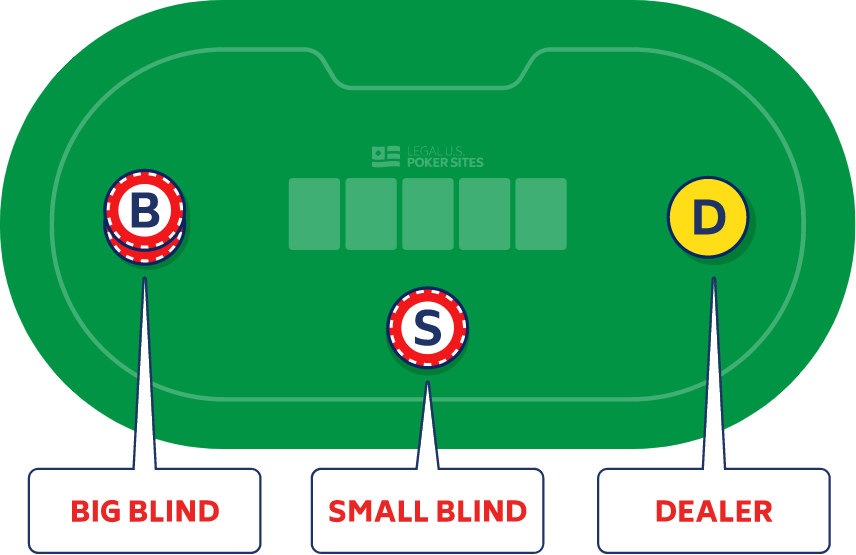Texas Hold’em Poker is one of the most popular variations of poker played worldwide. It’s a game of skill, strategy, and luck. In Texas Hold’em, players are dealt two hole cards, and they use those cards and the community cards on the table to make the best possible five-card hand. The game involves multiple rounds of betting and a showdown, where the player with the best hand wins the pot. This game is easy to learn, but it takes practice and experience to become a skilled player.

Texas Hold’em Poker History
Texas Hold’em Poker, also known simply as Hold’em, is one of the most popular variations of poker played today. Its origins can be traced back to the early 1900s when it was played in Texas as a version of the game of “stud” poker.
The exact history of the game is somewhat unclear, but it is generally believed that it was first played in the town of Robstown, Texas, in the early 1900s. The game quickly gained popularity in the surrounding areas and eventually made its way to Las Vegas in the 1960s.
In 1967, a group of Texas players, led by Doyle Brunson and Amarillo Slim, introduced the game to the Golden Nugget Casino in Las Vegas. The casino initially resisted the new game but eventually agreed to give it a try. The first Hold’em tournament was held in 1969, and the game quickly caught on, becoming a staple of the World Series of Poker (WSOP) in the 1970s.
The popularity of Texas Hold’em continued to grow in the 1980s and 1990s, thanks in part to the introduction of televised poker tournaments, which allowed viewers to see the game being played by the world’s best players. The “hole cam” was introduced in the late 1990s, which allowed viewers to see the players’ hole cards, making the game even more exciting.
Today, Texas Hold’em is played in casinos and home games around the world, and is the most widely-played variation of poker. It has become a cultural phenomenon, and its popularity shows no signs of waning anytime soon.
How to play Texas Hold’em Poker?
Texas Hold’em is one of the most popular variants of Poker, played in casinos and homes worldwide. Here’s a step-by-step guide on how to play Texas Hold’em:

- Players place their bets: Before each hand, players place their bets, called “antes” or “blinds,” which are mandatory bets to start the game.
- Dealing the cards: The dealer shuffles a standard 52-card deck and deals two cards, face down, to each player.
- First betting round: After receiving their cards, players can check, bet, or fold. The first player to act is the one to the left of the big blind.
- The Flop: The dealer deals three community cards, face-up, in the middle of the table. This is called the “flop.”
- Second betting round: After the flop, players can bet, check, or fold. The first player to act is the one to the left of the dealer.
- The Turn: The dealer deals the fourth community card, face-up, in the middle of the table. This is called the “turn.”
- Third betting round: After the turn, players can bet, check, or fold. The first player to act is the one to the left of the dealer.
- The River: The dealer deals the fifth and final community card, face-up, in the middle of the table. This is called the “river.”
- Fourth betting round: After the river, players can bet, check, or fold. The first player to act is the one to the left of the dealer.
- Showdown: If there are two or more players remaining after the final betting round, a showdown occurs. Players reveal their cards, and the player with the best hand wins the pot.
In Texas Hold’em, players can use any combination of their two hole cards and the five community cards to make the best possible five-card hand. .
Texas Hold’em Poker Variants
There are several different variants of Hold’em Poker that is played in various settings. Here are some of the most popular ones:
Limit Texas Hold’em Poker
This is a structured form of the casino game where there are set limits on how much players can bet and raise in each round. For example, in a $5/$10 Limit Hold’em game, the first two betting rounds would have a limit of $5, while the final two rounds would have a limit of $10.
No-Limit Texas Hold’em Poker
In No-Limit, there are no limits on the number of bets and raises that can be made in each round. This leads to more aggressive play and larger pots, making it a favorite of many professional players.
Pot-Limit Texas Hold’em Poker
This is a version of the game where the maximum bet and raise amount is equal to the current size of the pot. This leads to larger pots than in Limit Hold’em, but less aggressive play than in No-Limit Hold’em.
Double Hold’em Poker

Double Hold’em Poker is a variation of Texas Hold’em where players receive three-hole cards instead of two. However, they must discard one of their hole cards after the flop is dealt. This adds an extra layer of strategy to the game and allows for more possibilities when it comes to forming hands.
Short Deck Hold’em Poker
Short Deck Hold’em Poker is a relatively new variant that is gaining popularity. In this game, all cards below a six are removed from the deck, leading to a smaller deck with only 36 cards. This changes the hand rankings and strategy of the game, as certain hands become more valuable and others less so.
Six-Plus Hold’em Poker
Six-Plus Hold’em Poker is another variation of the game that is played with a smaller deck, this time with all cards below a five removed. This leads to more action and larger pots, as there are fewer cards in the deck and more possibilities for strong hands.
Texas Hold’em Poker Strategies
Texas Hold’em is one of the most popular variations of poker and is played worldwide. It is a game of skill and strategy, and players need to use different strategies to improve their chances of winning. Here are some of the most popular Texas Hold’em poker strategies:
Starting Hand Selection
Starting hand selection is one of the most important strategies in Texas Hold’em. Players should carefully consider their two-hole cards and decide whether to play or fold based on their strength. The top starting hands in Texas Hold’em include pocket aces, pocket kings, and pocket queens.
Position
The position is another important concept in Texas Hold’em. The later a player’s position, the more information they have about their opponents’ actions, and can make better-informed decisions. Players in early positions should play tighter and more conservatively, while those in late positions can play more aggressively.
Bluffing
Bluffing is a popular strategy in Texas Hold’em that involves making a bet or raise to deceive opponents into thinking that you have a stronger hand than you actually do. Successful bluffing requires a good read on opponents, a believable story, and careful observation of opponents’ reactions.
Pot Odds and Hand Equity
These are important concepts in Texas Hold’em that can help players make better-informed decisions. Pot odds refer to the ratio of the size of the pot to the size of the bet, and hand equity refers to the probability of winning the hand based on the cards dealt. By using these concepts, players can make better decisions about whether to call, raise, or fold in different situations.
Bet Sizing
Bet sizing is an important strategy in Texas Hold’em that involves choosing the right size of bets based on the strength of your hand, the size of the pot, and your opponents’ tendencies. A well-timed bet can put pressure on opponents and force them to make difficult decisions, while a poorly-sized bet can give opponents the opportunity to call or raise with weaker hands.
Adittional Texas Hold’em Poker Tips
Here are some tips to keep in mind when playing Texas Hold’em:
- Start with good hands: Play only strong starting hands, such as pocket pairs, suited connectors, or high-suited cards. Avoid playing weak hands like unsuited low cards or disconnected cards.
- Pay attention to position: Your position at the table is crucial in Texas Hold’em Poker. Play more aggressively when you are in a late position, and play more cautiously when you are in an early position.
- Manage your bankroll: Set limits on how much you are willing to bet and lose, and stick to those limits. Don’t play for stakes that are higher than your bankroll can handle.
- Be aware of your opponents: Pay close attention to your opponent’s actions, and try to read their behavior and patterns. This will help you make better decisions and adjust your strategy accordingly.
- Practice good bankroll management: Don’t bet too much on any one hand, and don’t chase after losses. Instead, play conservatively and focus on making small, consistent gains over time.
- Stay patient: This is a game of patience. Don’t get frustrated or give up when things don’t go your way. Stay focused on your strategy and wait for the right opportunities to present themselves.
- Avoid tilt: Tilt is a state of emotional frustration that can lead to reckless and irrational decisions. If you feel yourself getting frustrated or angry, take a break from the game and come back when you are feeling more level-headed.
- Stay disciplined: Stick to your strategy and avoid making impulsive decisions. Don’t let your emotions or your opponents’ behavior influence your decisions.
By following these tips and practicing regularly, you can become a more skilled and successful Texas Hold’em, Poker player.
The Future of Texas Hold’em Poker
It’s difficult to predict the exact future of the game, but the game will likely continue to be popular and evolve over time. Here are some possible trends and developments that could shape the future of this game:
- Online Gaming: The popularity of online gaming has exploded in recent years, and this trend is likely to continue. More and more players are turning to online platforms to play this, which could lead to changes in the way the game is played and regulated.
- Esports: Esports is a rapidly growing industry, and there are already several professional players who compete in tournaments and leagues. Texas may Hold ’em Poker could become a more recognized and respected sport in the future.
- Artificial Intelligence: Advances in artificial intelligence technology could have a significant impact on Texas Hold’em Poker. AI programs are already able to beat top human players in certain games, and it’s possible that AI could be used to develop new strategies and approaches to the game.
- New Variations: The game has already spawned several variations, such as Omaha and Seven-Card Stud, and it’s possible that new variations could be developed in the future. These variations could introduce new elements and strategies to the game, keeping it fresh and exciting for players.
FAQ
Conclusion
In conclusion, Texas Hold’em Poker is a timeless and widely popular card game that has captured the attention of players all around the world. It’s a game of skill, strategy, and luck that can be played in various settings, from casual home games to high-stakes tournaments. With its simple rules and thrilling gameplay, The game has become a cultural phenomenon that has inspired countless books, movies, and TV shows. Although the game has evolved and adapted over time, its core elements remain the same, making it a classic game that will continue to captivate players for generations to come.
